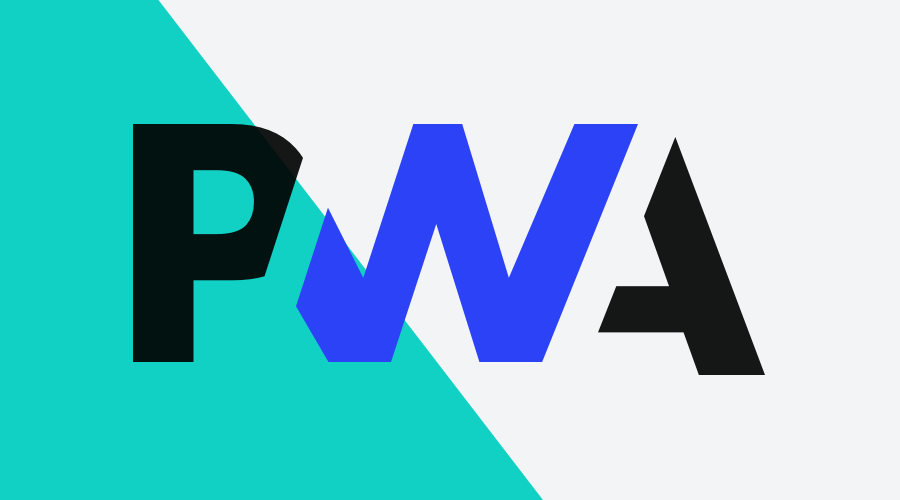After the rise of Progressive Web Apps (PWA), questions soon arose; When do you use a PWA? And when do you choose Native Apps? And which one is better? At Notificare, we have always been proponents of selecting the right technology for the associated challenge; there is no one-size-fits-all solution. That's why it's good to know when to choose native and when a PWA is a good fit for your organization. PWA vs. Native Apps, let the games begin.
Progressive Web App explained
A PWA is an app based on web technology and thus can be compared to a sophisticated website or a website on steroids. PWAs are something between a responsive website and a mobile app. And by using this kind of technology, there are additional opportunities compared to a website, such as offline support or access to native functionality. In previous blog posts, we've explained how to create an installable PWA and how to offer PWA features for an app-like experience.
The great promise of Progressive Web Apps is that they can reach anyone, anywhere, on any device with one single codebase. PWAs can read and write files from the local file system, access hardware connected via USB or Bluetooth, and even interact with data stored on mobile devices, like contacts and calendar events. You can access the camera, location services, and even remote notifications in some cases. This sounds almost too good to be true, and again in some cases, it is, and sometimes it's not.
Advantages of Progressive Web Apps
PWAs run in a browser
As mentioned earlier, a PWA can be seen as a website with app-like features, and obviously, it runs in a browser. This means that you can use the browser's functionalities on the device on which the PWA is visited. Think, for example, of the use of the camera, push notifications (except iOS Safari), or GPS.No installation or update process
Since PWAs are available through the browser, they do not need to be installed through an app store. This also means that you are not dependent on the rules and distribution process of the app stores. Users can open the PWA via a URL directly or via an SMS message or email. Also, because the PWA is a web app, no updates are needed to have the most recent version of your app. The next time a user visits your PWA after the update, they instantaneously get the new version.Broad reach, also accessible in search engines
Again, since we are talking about web technology, the amount of devices that it can reach is enormous. And because a PWA is accessible via the browser, search engines like Google can index them as well.Great performance & offline support
A PWA can access a browser's storage and uses fewer resources than a native app, while its performance is comparable. You can use PWAs offline too. This positively affects the user experience, if done right, internet connectivity might not always be required.More affordable
Developing a PWA is often cheaper than developing a native app. Usually it requires less development time as developers can use only one code base for all platforms.
If you consider all these benefits of a PWA, it might lead to outperform your current traditional website. And for a desktop or mobile, it offers many advantages. But the big question is, does it replace the native app on the smartphone?
The advantages mentioned above of a PWA are not necessarily a reason not to choose a native app. They do show that instead of using a 'normal' website, you can offer the web user an almost app-like experience by applying modern web techniques. But of course, consumers don't always want just a near-app-experience...
So why choose a native app for mobile?
The bar is set very high these days, and consumers expect the app to work flawlessly, as they are used to from the big players who have earned their position on the smartphone.
iOS and Push Notifications
One of the main reasons to choose a Native app is that a PWA on iOS does not support push notifications. Without this feature, you are back to the days when you couldn't send any personalized messages. Can you imagine an app with no Inbox that gathers all your messages? Just the lack of this feature is enough for many organizations to consider a native app. For desktop and Android users, you can, of course, use web push notification.Discoverability and distribution in the apps stores
Although it is true that with a native app you'll miss out on how your content is found in search engines, when going native you make optimal use of the discoverability within the app stores. And there is also much traffic inside these stores. Once an app is promoted, found and installed, you should not underestimate the value of the presence of the icon on your home screen.More features from the device
And of course, as already mentioned, when going all native you can use many more features available in mobile device like, for example, location services that run in the background. You need this feature to be able to use geo-fencing and be able to send users relevant messages within the right context. Although since iOS 11.3, it's been possible to run PWAs on Apple devices, Apple doesn't allow PWAs to access many essential features, including Touch ID, Face ID, ARKit, Bluetooth, NFC, Beacons, sensors, and again push notifications.
To conclude the battle
Unfortunately, the battle between PWA vs. Native did not produce a winner. The choice depends primarily on the specific needs and business requirements.
If you want to get started with PWA, for example, to enrich your current website and use Notificare's Web Push Notifications technology for Desktop and Android, please request this Free White Paper to learn more about it.
If you need help with your strategic decision, you can always ask one of our consultants via our Professional Services Team.


